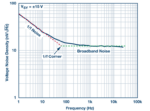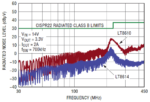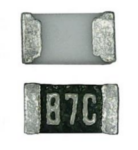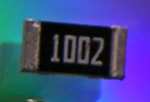onsemi announced the availability of the CEM102, a compact analog front-end (AFE) that enables electrochemical sensing with exceptional accuracy at very low currents. With its small form factor and industry-leading low power consumption, the CEM102 allows engineers to create versatile and compact solutions for industrial, environmental, and healthcare applications such as air and gas detection, […]
Medical
Analog and digital capabilities integrated into low-power transceiver
Arctic Semiconductor unveiled SilverWings. Representing a breakthrough in the industry, SilverWings is the first-ever 4×4 low-power transceiver offering multi-stage up and down conversion from digital to RF and RF to digital, empowering programmable and adaptable system designs. Leveraging Arctic’s renowned low-power architecture, SilverWings seamlessly integrates high-performance analog capabilities with high-bandwidth digital features, incorporating unique Digital-IF and High-IF […]
Free, online tool simplifies configuration of custom LXI RF and microwave switching systems
Pickering Interfaces announced its Microwave Switch Design Tool, a new free online tool for configuring flexible LXI microwave switching products. The dedicated tool will simplify the configuration of custom LXI RF & microwave switching systems, helping bring powerful, flexible microwave design functionality to customers building systems for signal routing applications across 5G, wireless & telecommunications, […]
Minimizing electrical noise to improve medical-ultrasound images, Part 3
Low-noise circuitry is critical to image quality of medical ultrasound, an indispensable diagnostic tool. Efficiency versus noise It may seem that if there is a tradeoff between power-supply noise versus potential efficiency, the need for ultralow noise in the ultrasound application should prevail. After all, a few more tens of milliwatts of dissipation should not […]
Minimizing electrical noise to improve medical-ultrasound images, Part 2
Low-noise circuitry is critical to image quality of medical ultrasound; an indispensable diagnostic tool. Despite the conceptual simplicity of the underlying principle, a complete, high-end ultrasound imaging system is a complicated device (Figure 1). The ultimate performance of the system is largely determined by the transducer and analog front end (AFE), while post-processing of the […]
Minimizing electrical noise to improve medical-ultrasound images, Part 1
Low-noise circuitry is critical to the image quality of medical ultrasound, an indispensable diagnostic tool. Ultrasound technology, a widely used non-invasive tool in medical diagnostics and other applications, has shifted from static to dynamic images and from black-and-white to color Doppler images. These important enhancements are largely due to the introduction of digital ultrasound technology […]
Precision thin-film resistors offer ±0.01% tolerances, ±2ppm TCRs
With the proliferation of electronics in nearly every market sector, there is an increasing need for precision resistors. For markets such as medical instrumentation and control, industrial and automotive controls, communications, and test & measurement, these precision resistors must maintain electrical and environmental stability long term. Stackpole’s RNCF series of precision thin film resistors meet these […]
Thin-film resistors excel in high sulfur, high humidity settings
Environmental stability for thin film resistors has become more important with increased electronic content. Sulfur contamination for film resistors, for example, is becoming a more prominent issue for a wide range of end products. Electronic devices and circuitry may encounter sulfur in the presence of oils, lubricants, gaskets, hoses, and atmospheric gasses in highly industrial […]
PCB assembly tips for medical device manufacturing
By Suresh Patel, Sales Engineer, Mer-Mar Electronics Medical PCBs are built with the highest quality standards to ensure the precision and reliability of medical devices. PCB fabrication and assembly processes are converging on greater accuracy of health monitoring and diagnostic devices. Flexible treatments and faster information exchange systems are possible due to the improved design, […]
JFET optimized for high-end sensor front-end amplification
Linear Systems has announced the re-release of its LSK489 discrete component with specialized parameter grading. The LSK489 is one of the world’s premier JFETs optimized for use in high-end sensor front-end amplification designs. The LSK489 is a monolithic dual ultra-low-noise junction field effect transistor (JFET) optimized for use in high-end sensor front-end amplification designs. Linear […]










